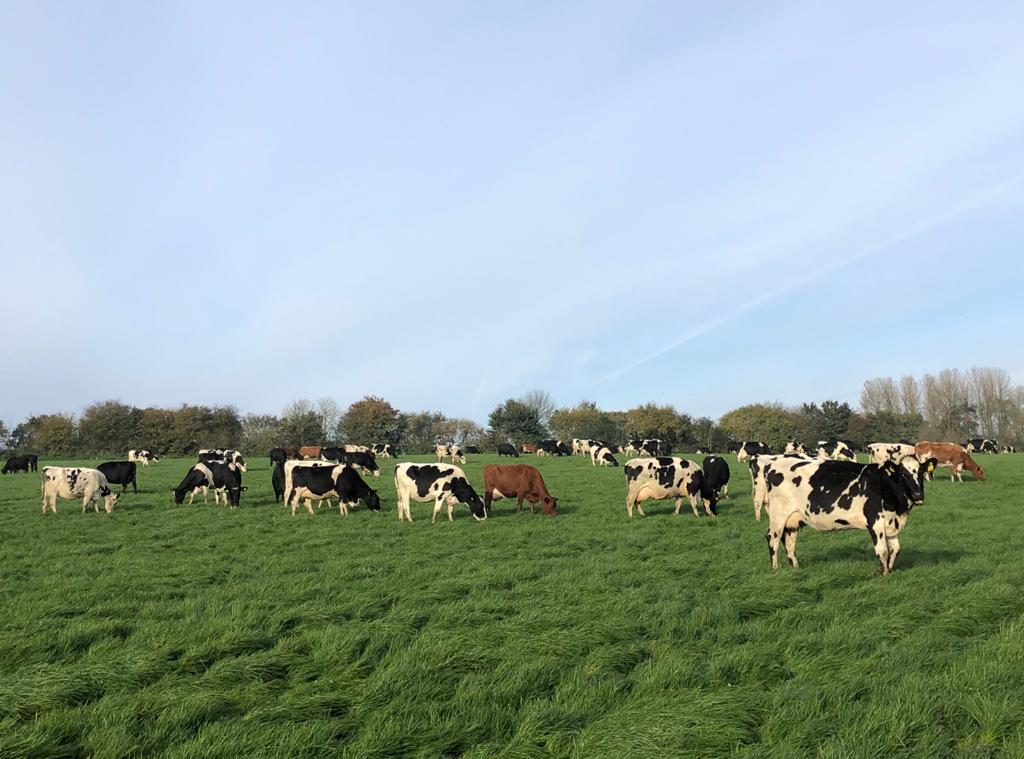- Home
- Knowledge library
- Meet Forage for Knowledge contributor John Forbes
Meet Forage for Knowledge contributor John Forbes
Greensand, summer drought and a split-block herd on one grazing platform are challenging the grazing skills of Irishman, John Forbes, on a unit near Marlborough in Wiltshire.
The business
Wolfhall Farm near Marlborough, Wiltshire, changed to split-block calving and rotational grazing in 2012. Owner, Tom Blanchard, has been monitoring his grass with Forage for Knowledge ever since, with current herd manager, John Forbes, measuring since 2019.
The farm
Altitude: 150 m above sea level
Soils: greensand on top with some clay and limestone
Rain: 783–1,009 mm
140 ha milking platform
80 ha silage leys
46 ha maize
4 ha fodder beet
The cows
320 spring calvers plus 230 autumn calvers: crossbred genetics including Friesian, Jersey, Norwegian Red, Holstein bloodlines.
Spring herd produces 5,500 from 1 t/cow of cake; two-thirds of dry cows are housed with the rest outwintered on fodder beet until 3–4 weeks before calving when they come inside.
Autumn calvers average 8,000 litres from 2 t/cow; fully housed from about 10 October.
Turnout usually mid-February, with both herds spending 270–280 days at grass.
What are the grazing challenges with a split-block herd?
“It takes a bit of tinkering to balance everything,” admits John. “If you get it wrong, it goes very wrong. It’s a challenge to manage. We have one grazing platform, and most of the pinch is in spring.”
John uses his weekly grass walk to operate a highly flexible system of 47 paddocks, ranging in size, but prioritising spring calvers at turnout: “I can send cows in two different directions – without hold-ups or getting the two groups too close to each other – because we have the infrastructure.”
Spring calvers are housed in cubicles by day, eating a premix and grazing at night. Autumn cows come in at night to clean up. A bit of maize gluten is fed in the parlour.
What have you learnt about managing grass on this farm?
“The importance of grass growing and utilising it, targeting it on the shoulders. In July, we expect a decline and not a lot from June. Last year, for instance, we only grew 20 kg DM/ha/day in May and June because of drought. The soils are pretty free-draining, but they can massively burn up in summer. So it’s a case of making the most of it when you get it.”
How much grass can you grow?
Despite last year’s drought, the farm had its highest yield, averaging 13.5 tDM/ha. In 2019 it was 12 tDM/ha. “What made the biggest difference was to close up autumn grass instead of grazing it off. This carried grass over into spring and pushed growth early in the season. Inputs have stayed the same,” says John.
Paddock yields ranged 10–18 tDM/ha with an average ME of 12 for most of the year and protein at 22% (peaking at 29% this spring): “It makes you think twice about putting bought-in protein into the mixer wagon,” he adds.
Grazing goals for this year?
As well as adding 20 ha to the grazing platform, John plans to start cutting silage two weeks earlier and every six weeks. All three cuts will be clamped instead of baling the third cut. “We will have silage in reserve instead of scrambling around for hay to feed cows in a drought. We need to make ourselves a bit more resilient to drought,” he explains.
Investment in kit means dirty water can be applied to every paddock. Having realised that yellowing in fresh new leaves was due to sulphur deficiency, John is going to include sulphur in the three-weekly fertiliser applications.


